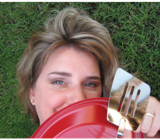
Okay, that’s a Mallard, but Super Sister-in-Law Chef Sandy will be talking to us about the MAILLARD reaction today. Very different things.
Close. But not really.
Here’s what she has to share with us about creating exquisite flavor for your steaks with what is known as the Maillard reaction. Man, it’s nice to have smart people in the family . . .
What is the Maillard reaction? Does it have anything to do with ducks?
What makes a steak mouthwateringly delicious?
Read on . . .
From Wikipedia: “The Maillard reaction (French pronunciation: meh-YAR) is a form of nonenzymatic browning similar to carmelization. It results from a chemical reaction between an amino acid and a reducting sugar, usually requiring heat. Vitally important in the preparation or presentation of many types of food, it is named after chemist Louis-Camille Maillard.”
What this means in layman’s’ terms is that the combination of high heat with amino acids creates a new flavor profile. This reaction is accelerated by an alkaline environment.
The Maillard reaction is what produces the brown-on-the-outside, tender-on-the-inside pretzels available in Biergartens in Germany, or from street side vendors in the Northeast US. This reaction is what we are looking for when we brush egg wash or milk onto pastry – the browning that will occur when the product is baked adds a tremendous dimension to the finished product, in addition to adding visual appeal. If you ever try to make pretzels or bagels at home without adding something alkaline on the outside (the recommended method is to dip the dough in a boiling baking soda bath) you will be sadly disappointed in your resulting pastry. You will have a crunchy, pale, bloated looking pretzel or bagel instead of the shiny brown crust covering a tender soft interior product.
Alkalinity in order of weakest-strongest:
Milk – almost acid, just slightly more alkaline than water
Eggs
Salt
Baking Soda
Lye
Pretzels, in fact, used to be made in commercial settings by dipping them in a lye bath, which I would never recommend you try at home. I have had great pretzel-making success using the baking soda bath method – dunk the shaped pretzel dough in boiling water to which 2/3 cup of baking soda has been added. Surprisingly, the baking soda doesn’t really impart a taste to the pretzels (thank goodness!), just allows them to brown beautifully. The recipe I use doubles up on the Maillard effect by then brushing the pretzels with egg yolk before sprinkling with pretzel salt and baking.
So what does all of this have to do with cooking a great steak?
The Maillard reaction is that amazingly brown seared crust on a fantastically prepared steak or burger. The nuance of flavors is something that cannot be duplicated or created with any combination of seasonings; it must be cooked into the meat. Meat is actually acidic, so it really benefits from a little help to get a Maillard reaction when cooking meat:
- ALWAYS dry meat before cooking –use a paper towel to blot the meat dry before you even season the beef, or blot dry anything that has been marinated
- get your pan hot
- season the meat with kosher salt to increase your Maillard reaction
- use a well seasoned pan to avoid the need to add a lot of oil
- don’t crowd the pan – this will reduce the heat in the pan and prevent that elusive crust from forming
- let the meat cook long enough to form a crust before you disturb or turn it
- cook in a pan rather than on a grill to get the purest meat flavor and best Maillard reaction
So there you have it! Nothing to do with ducks whatsoever. Try these tips for the Maillard reaction the next time you are sizzling a beautiful steak and it will not only be gorgeous – it’ll be incredibly flavorful too!
Photo courtesy of Animal.Discovery.com.



